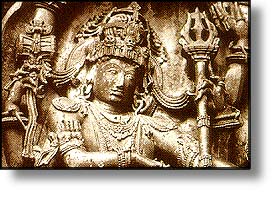Adventure in Nepal | Asia Homepage | The World
Because it was there. ---George Lee Mallory, when asked why anyone would want to climb Mount Everest.
Location, Geography, & Climate

Nepal, home to Mount
Everest, is dominated by the world's most imposing mountains. Although the
country is relatively small (147,181 square kilometers), 80 percent of its
territory is occupied by the dramatic peaks of the Himalayas.
Nepal was closed to foreign visitors until1951, a situation which
contributed greatly to its mystique in the west. This small, hospitable
country has since become an exceptionally popular destination for
travelers, whether they are in search of climbing challenges or spiritual
enlightenment.
Nepal can be divided into three geographical regions, each stretching from east to west across the country. The southernmost strip of land, the Terai, is bordered to the north by Himalayan foothills and to the south by the Ganges River. The area was originally covered with tropical vegetation, but has been almost completely converted to agricultural production. The Terai is now the breadbasket of Nepal and is covered with farms.
The central section of Nepal is formed by the Mahabharat Chain, a range of mountains that reach modest altitudes of 2,000-3,000 meters. Farming has become an important activity in the area; terraced farms produce rice, corn and wheat. The Kathmandu Valley, a stretch of green in the middle of the Mahabbarat, is home to Nepal's capital and other historic cities.
The Himalayas stretch across the northern section of Nepal. Eight of the ten highest peaks in the world are located here, and most are covered with permanent snowfields. The area is sparsely populated, with little vegetation above the tree-line (4,200 meters).
The climate varies considerably with elevation. May to October is monsoon season, when rain soaks the Terai and snow falls on the Himalayan peaks. Mid-October to mid-December is prime mountaineering weather: the skies are clear and sunny, temperatures range from warm in the lowlands to crisp in the mountains. March and April are also good months for mountain treks, although temperatures in Kathmandu and the Terai tend to be steamy.
History and People
While there is evidence that Nepal was inhabited in prehistoric times, there has been little archeological research on early indigenous peoples. In the 8th century BC, migrants from India settled in the region of Kathmandu. Indian influence in the region was further consolidated by the Licchavi Dynasty (300-900 AM), who introduced Hindu traditions and culture (including the caste system). By the 13th century, three kingdoms, all under the control of the Malla Dynasty, dominated the Kathmandu Valley. Over the next five hundred years, the Malla rulers proved to be important patrons of the arts, building elaborately-decorated temples and palaces that survive to this day. Throughout the centuries, Nepal's topography protected the country from outside invaders. The Himalayas provided an impenetrable boundary to the north, while endemic malaria in the Terai kept out attacks from the south.
Nepal's kingdoms were unified in 1769 by Prithvi Narayan Shah, an ancestor of Nepal's present-day king. Inspired by India's independence, a nationalist movement grew in Nepal in the 1940's, but the king remained in control of the country. It was not until 1991 that a new constitution was introduced and multiparty elections were held for the first time.
Nepal's 18 million inhabitants belong to dozens of different ethnic groups. They can be divided roughly into Hindu peoples (who live mainly in the lowlands) and Buddhists, who live in mountain villages close to Tibet. Hindus, who make up 90 percent of the population, dominate political and religious life. But Buddhism has a special connection to Nepal: Siddhartha Gautama, who was later revered as the Buddha, was born in the Terai in 543 BC. Perhaps the most well-known Buddhist ethnic group are the Sherpa, who have long been associated with Himalayan mountaineering expeditions. The vast majority of Nepal's population makes a living from subsistence agriculture.
Adventure in Nepal | Asia Homepage | The World
